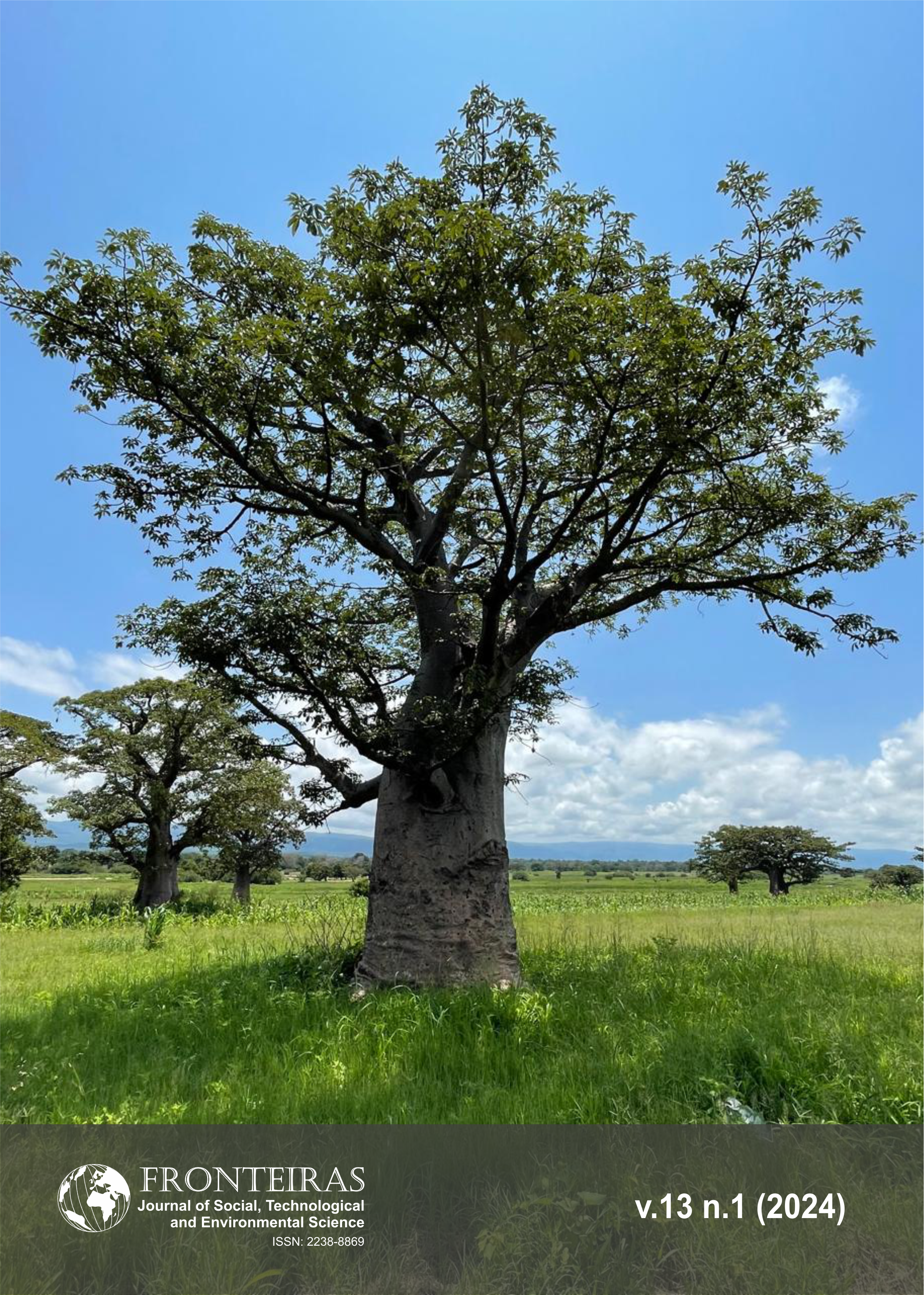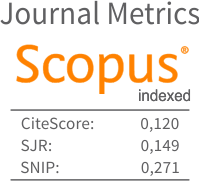Criminological Analysis of Green Delicts in the Federal District of Brazil
DOI:
https://doi.org/10.21664/2238-8869.2024v13i1.p200-212Palavras-chave:
environmental crime, hotspot analysis, green criminologyResumo
Green criminology studies transgressions that cause damage to the natural environment. Spatial approaches deal with incidental conditions of every sort of crime, and they are particularly appropriate to unveil rational components of criminal activities. In the Brazilian scenario, previous studies have pointed to the need for law enforcement and further studies on green criminology. This work aimed to unveil spatial patterns of environmental crimes in the Federal District of Brazil (FDB) and their possible causes. Records of environmental crimes from 2009 to 2016 registered by the local police were subject to spatial statistics, and results showed that most occurred in urban areas. Brasília City and its surrounding counties, farms, legally protected areas, and natural habitats create a mosaic of land uses that have influenced the spatial distribution of environmental crimes recorded by the local police. Over the years, crimes have occurred repeatedly in similar areas, suggesting sensitive places for their commitment. Still, those areas were not restricted to the neighborhood boundaries, and the homogeneity among contiguous neighborhoods supported similar levels of disorder. The proximity of these places to legally protected areas, the permeability phenomenon, and some types of land use have been identified as possible explanations for those crime records.
Referências
Andresen MA 2011. Estimating the Probability of Local Crime Clusters: The Impact of Immediate Spatial Neighbors. J Crim Justice 39 (5): 394–404.
Anselin L 2003. Spatial Econometrics. In BH Baltagi A Companion to Theoretical Econometrics. Blackwell Publishing Ltd., Malden, p. 310–330.
Anselin L, Cohen J, Cook D, Gorr W, and Tita G 2000. Spatial Analysis of Crime. In D Duffee Measurement and Analysis of Crime and Justice. U.S. Dept. of Justice, Office of Justice Programs, National Institute of Justice, Washington, D.C., p. 213–262.
Beato CC 1998. Determinantes de Criminalidade Em Minas Gerais. Rev. Bras. Ci. Soc. 13 (37).
Bernasco W, Nieuwbeerta P 2005. How Do Residential Burglars Select Target Areas?: A New Approach to the Analysis of Criminal Location Choice. Brit J Criminol 4 45 (3): 296–315.
Biderman AD, Reiss AJ 1967. On Exploring the ‘Dark Figure’ of Crime. Ann Amer Acad Pol Soc Sci, 1–15.
Borges RC, De Oliveira A, Bernardo N, da Costa RMMC 2006. Diagnóstico Da Fauna Silvestre Apreendida e Recolhida Pela Polícia Militar de Meio Ambiente de Juiz de Fora, MG (1998 e 1999). Rev. Bras. Zooci. 8 (1): 23–33.
Brantingham PL, Brantingham PJ 1993. Nodes, Paths and Edges: Considerations on the Complexity of Crime and the Physical Environment. J Environ Psychol, 13: 3–28.
Brasil. Lei No 9.605, de 12 de fevereiro de 1998. Dispõe Sobre as Sanções Penais e Administrativas Derivadas de Condutas e Atividades Lesivas Ao Meio Ambiente, e Dá Outras Providências. Available from: http://www.planalto.gov.br/ccivil_03/leis/l9605.htm.
Brasil. Lei No 9.985, de 18 de junho de 2000. Regulamenta o Art. 225, § 1o, Incisos I, II, III e VII Da Constituição Federal, institui o Sistema Nacional de Unidades de Conservação Da Natureza e Dá Outras Providências. Available from: http://www.planalto.gov.br/ccivil_03/leis/l9985.htm.
Brasil. Lei No 9.985, de 18 de junho de 2000. Regulamenta o Art. 225, § 1o, Incisos I, II, III e VII Da Constituição Federal, institui o Sistema Nacional de Unidades de Conservação Da Natureza e Dá Outras Providências. Available from: http://www.planalto.gov.br/ccivil_03/leis/l9985.htm.
Cohen LE, Felson M 1979. Social Change and Crime Rate Trends: A Routine Activity Approach. Am Sociol Rev 44 (4): 588–608.
Cornish DB, Clarke RV 2008. The Rational Choice Perspective. In R Wortle , L Mazerolle, Environmental Criminology and Crime Analysis. Willan Publishing, Cullompton, p. 21-44.
Corrêa RS, Abreu GRA 2014. O Dano a Unidades de Conservação Nos Termos Do Artigo 40 Da Lei de Crimes Ambientais. Rev. Bras. Crim. 3 (2): 11–16.
Cozens PM 2008. New Urbanism, Crime and the Suburbs: A Review of the Evidence. Urb Poli Res 26 (4): 429–44.
Distrito Federal. Lei Complementar No 827, de 22 de julho de 2010. Regulamenta o Art. 279, I, III, IV, XIV, XVI, XIX, XXI, XXII, e o Art. 281 Da Lei Orgânica Do Distrito Federal, instituindo o Sistema Distrital de Unidades de Conservação Da Natureza – SDUC, e Dá Outras Providências. Available from: http://www.fazenda.df.gov.br/aplicacoes/legislacao/legislacao/TelaSaidaDocumento.cfm?txtNumero=827&txtAno=2010&txtTipo=4&txtParte=
Eck JE, Chainey S, Cameron JG, Leitner M, Wilson RE 2005. Mapping Crime: Understanding Hot Spots. U.S. Dept. of Justice, Office of Justice Programs, National Institute of Justice, Washington, D.C., 79 pp.
ESRI [homepage on the Internet]. ArcGIS Pro. [cited 2023 Jul 20]. Optimized Hot Spot Analysis (Spatial Statistics); [about 16 screens]. Available from: https://pro.arcgis.com/en/pro-app/latest/tool-reference/spatial-statistics/optimized-hot-spot-analysis.htm
Fisher BS 2003. A Tale of Two Ivory Towers. A Comparative Analysis of Victimization Rates and Risks between University Students in the United States and England. Brit J Criminol 43: 526–45.
Getis A, Ord JK 1992. The Analysis of Spatial Association by Use of Distance Statistics. Geogr Anal 24 (3): 189–206.
Groff ER, Taylor RB, Elesh DB, McGovern J, Johnson L. 2014. Permeability across a Metropolitan Area: Conceptualizing and Operationalizing a Macrolevel Crime Pattern Theory. Environ Plan A 46 (1): 129–52.
Harries K 1999. Mapping Crime: Principle and Practice. U.S. Dept. of Justice, Office of Justice Programs, National Institute of Justice, Washington, D.C., 206 pp.
Hernandez EFT, de Carvalho MS 2006. O Tráfico de Animais Silvestres No Estado Do Paraná. Act Sci. Hum Soc Sci 28 (2): 257–66.
Hillier B 2004. Can Streets Be Made Safe? Urb Des Int 9 (1): 31–45.
Johnson SD, Bowers KJ 2004. The Stability of Space-Time Clusters of Burglary. Brit J Criminol 44 (1): 55–65.
Kennedy LW, Forde DR 1990. Routine Activities and Crime: An Analysis of Victimization in Canada. Criminol 28 (1): 137–52.
Kinney JB, Brantingham PL, Wuschke K, Kirk MG, Brantingham PJ 2008. Crime Attractors, Generators and Detractors: Land Use and Urban Crime Opportunities. Built Environ 34 (1): 62–74.
Lawson AB 2010. Hotspot Detection and Clustering: Ways and Means. Environ Ecol Stat 17 (2): 231–45.
Lynch MJ 1990. The Greening of Criminology: A Perspective on the 1990s. The Crit Criminol 2 (3): 3–12.
Lynch MJ, Barrett KL, Stretesky PB, Long MA 2017. The Neglect of Quantitative Research in Green Criminology and Its Consequences. Crit Criminol 25 (2): 183–98.
Mapa Ambiental Do Distrito Federal – ano 2014 [homepage on the Internet]. Distrito Federal: IBRAM - Instituto do Meio Ambiente e dos Recursos Hídricos do Distrito Federal. [updated 2022 May 23; cited 2023 Jul 20]. Available from: https://www.ibram.df.gov.br/mapa-ambiental/
Musumeci L 2007. Estatísticas de Segurança: Para Que Servem e Como Usá-Las. In S Ramos, A Paiva, Mídia e Violência: Novas Tendências Na Cobertura de Criminalidade e Segurança No Brasil. IUPERJ, Rio de Janeiro, p. 151–68.
Myers N, Mittermeier RA, Mittermeier CG, da Fonseca GAB, Kent J 2000. Biodiversity Hotspots for Conservation Priorities. Biodiv Conserv 403: 853–58.
Newman O 1996. Creating Defensible Space. U.S. Department of Housing and Urban Development, Office of Policy Development and Research, Washington, D.C., 123 pp.
Ord JK, Getis A 1995. Local Spatial Autocorrelation Statistics: Distributional Issues and an Application. Geogr Anal 27 (4): 286–306.
PDAD - Pesquisa Distrital Por Amostra de Domicílios [homepage on the Internet]. Distrito Federal: CODEPLAN - Companhia de Planejamento do Distrito Federal. [updated 2023 Jun 15; cited 2023 Jul 20]. Available from: https://www.codeplan.df.gov.br/pdad/.
Ribeiro RE 2017. Crimes Ambientais Registrados Pela Polícia Civil No Distrito Federal: Uma Análise Entre Os Anos de 2009 e 2015. Rev. Bras. Criminal. 6 (1).
Ribeiro RE, Corrêa RS 2019. Influência de Fatores Socioeconômicos Sobre Os Crimes Ambientais No Distrito Federal. Desenv. M. Amb. 50: 290–305.
Sawyer D, Mesquita B, Coutinho B, de Almeida FV, Figueiredo I, Lamas I, Pereira LE, Pinto LP, Pires MO, Kasecker T. 2018. Ecosystem Profile: Cerrado Biodiversity Hotspot (Full Report). Supernova, Brasília, 145 pp.
Skogan WG 1977. Dimensions of the Dark Figure of Unreported Crime. Crime & Delinquency, jan: 41–50.
Soares GAD 2008. Não Matarás: Desenvolvimento, Desigualdade e Homicídios. FGV, Rio de Janeiro, 200 pp.
Steenbeek W, Kreis C 2015. Where Broken Windows Should Be Fixed: Toward Identification of Areas at the Tipping Point. J Res Crime and Delinquency 52 (4): 511–33.
Townsley M, Birks D, Ruiter S, Bernasco W, White G 2016. Target Selection Models with Preference Variation. J Quant Criminol 32 (2): 283–304.
Tseloni A, Osborn DR, Trickett A, Pease K 2002. Modelling Property Crime Using the British Crime Survey: What Have We Learnt? Brit J Criminol, (42): 109–28.
White R 2008. Crimes against Nature: Environmental Criminology and Ecological Justice. Willan Publishing, Devon, 313 pp.
Wortley R, Mazerolle L 2008. Environmental criminology and crime analysis: situating the theory, analytic approach and application. In R Wortley, L Mazerolle, Environmental Criminology and Crime Analysis. Willan Publishing, Devon, p. 1-15.
WWF - World Wide Fund for Nature [homepage on the Internet]. Bioma Cerrado. [updated 2019 Dec 1; cited 2023 Jul 20]. Bioma Cerrado; [22 pp.] Available from: https://wwfbrnew.awsassets.panda.org/downloads/wwf_livretoptfinal.pdf
Zilney LA, McGurrin D, Zahran S 2006. Environmental Justice and the Role of Criminology: An Analytical Review of 33 Years of Environmental Justice Research. Crimin Justice Rev 31 (1): 47–62.
Downloads
Publicado
Como Citar
Edição
Seção
Licença
Copyright (c) 2024 Renata Esteves Ribeiro, Rodrigo Studart Corrêa, Antônio Felipe Couto Júnior (In Memoriam)

Este trabalho está licenciado sob uma licença Creative Commons Attribution-NonCommercial 4.0 International License.
Esta revista oferece acesso livre imediato ao seu conteúdo, seguindo o princípio de que disponibilizar gratuitamente o conhecimento científico ao público proporciona maior democratização mundial do conhecimento.
A partir da publicação realizada na revista os autores possuem copyright e direitos de publicação de seus artigos sem restrições.
A Revista Fronteiras: Journal of Social, Technological and Environmental Science segue os preceitos legais da licença Creative Commons - Atribuição-NãoComercial 4.0 Internacional.


